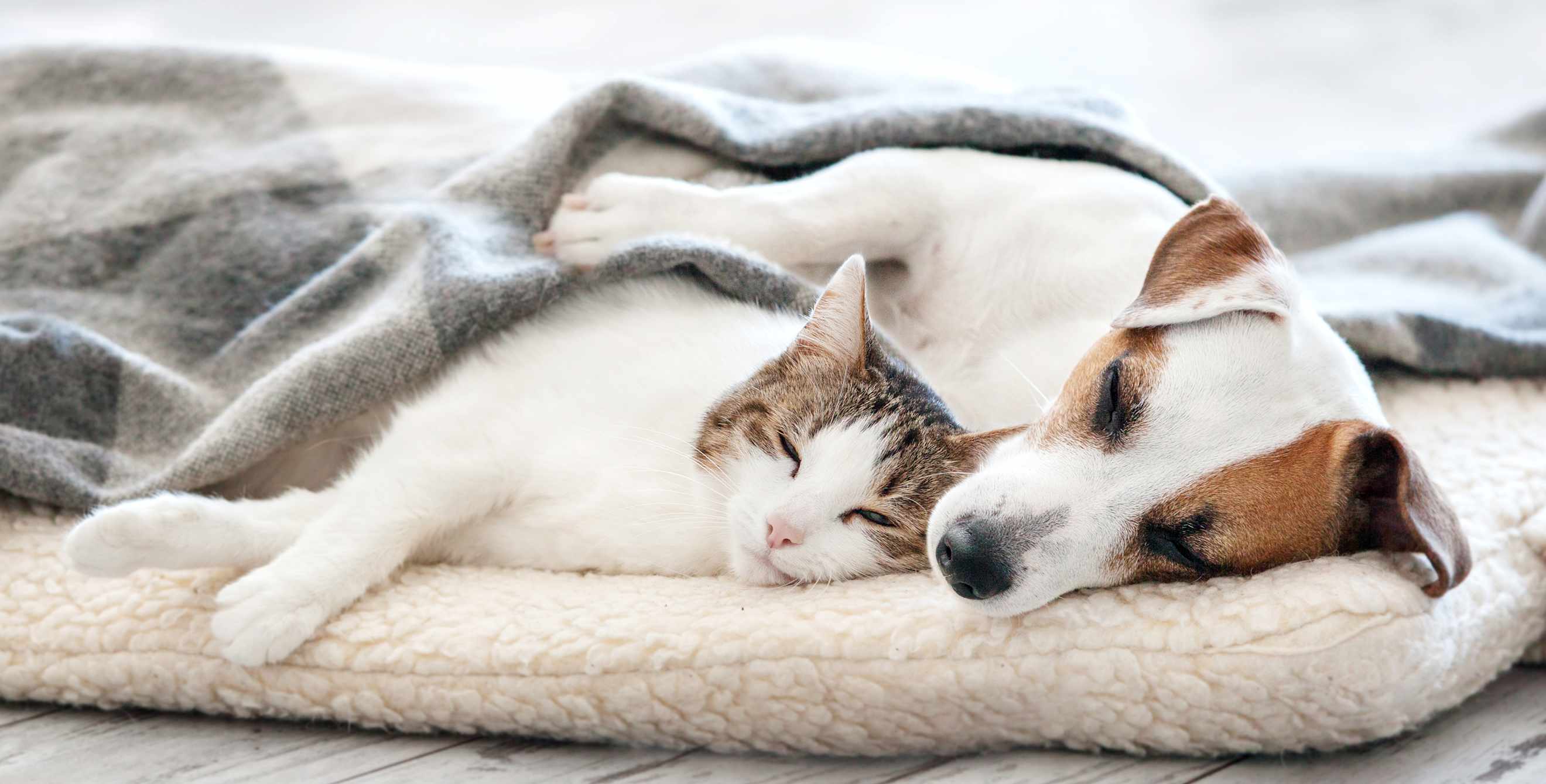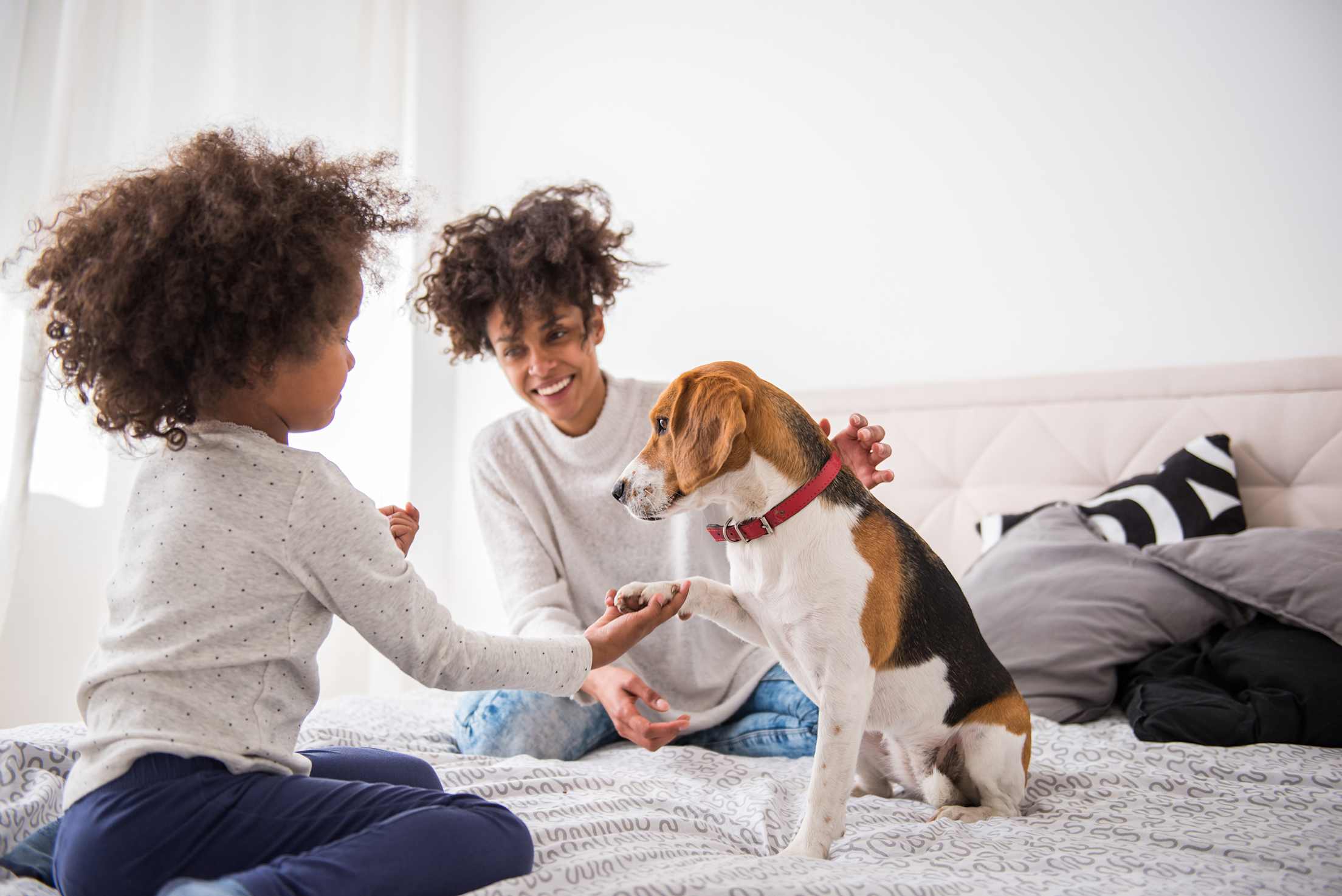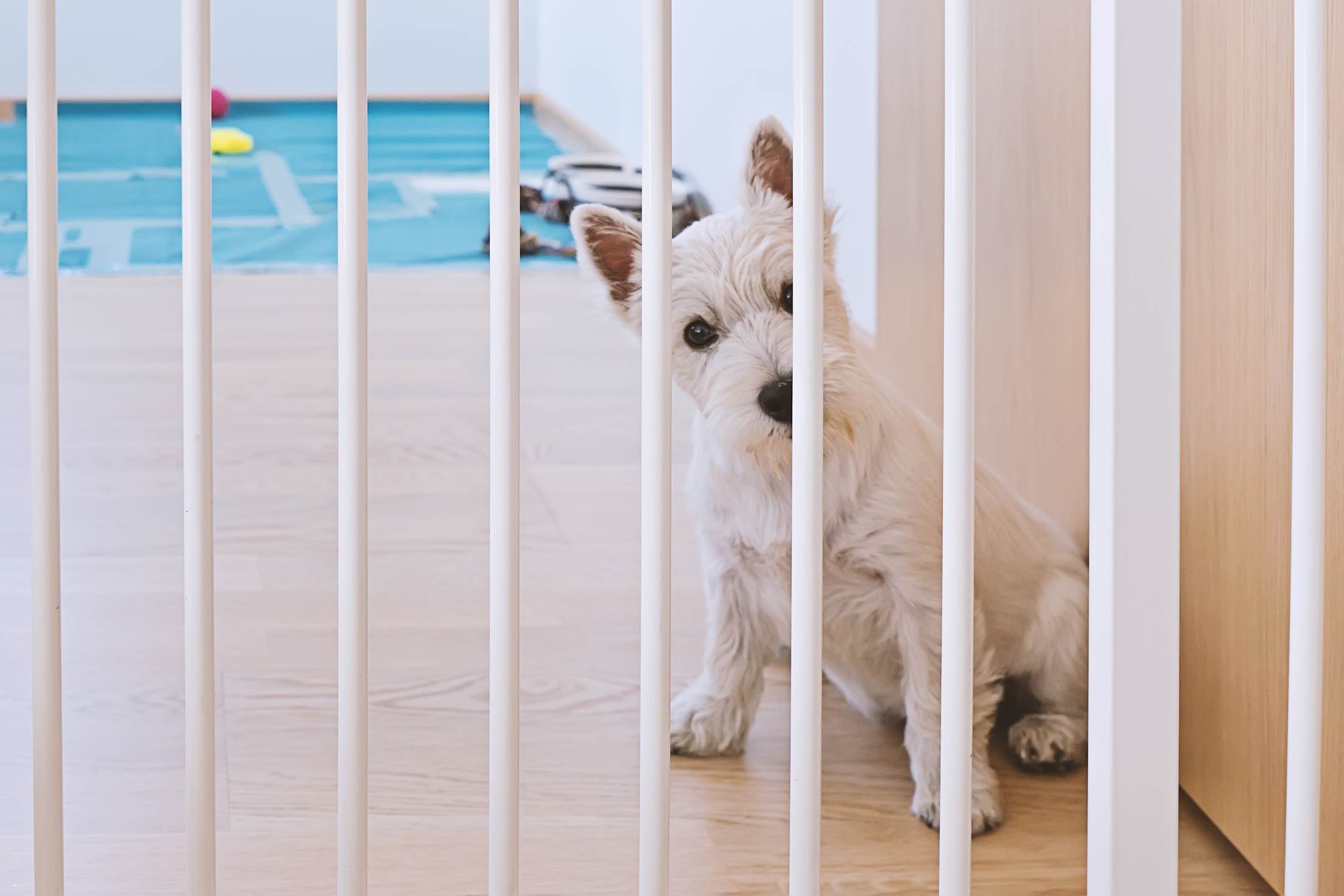
How to Pet-Proof Your Home
Keep your pets—and your possessions—safe.

Before you bring a cat or dog into your home, it’s wise to pet proof your space.
“Pets are like perpetual toddlers,” says Shawna Garner, DVM, lead veterinarian at FirstVet, an app-based vet service. That’s particularly true for kittens and puppies, but even more mature pets will be curious to explore a new space, Garner points out.
That exploration and childlike activity can lead to trouble: Pets can get trapped in tight spaces, fall down stairs or out windows, encounter toxic items, or eat any number of harmful items, from socks to human medications.
Fortunately, many of these accidents are preventable with a few readjustments. This room-by-room guide walks you through essential pet-proofing tasks.
How to Get Started
Garner recommends following a common strategy used by baby- and child-proofers: Get on your hands and knees so you’re at your animal’s eye level. Then, look for pitfalls—anything a pet can jump on, knock over, or reach.
Your pet’s breed, age, and characteristics will determine the extent of your pet proofing. All cats are curious, but some cats are really, really curious. Some pets want to chomp on plants, others ignore them. Dogs differ by breed: For example, huskies and greyhounds are high stress, bichons and Labradors are high energy, and Newfoundlands and mastiffs are sedentary, notes Shadi Ireifej, DVM, DACVS, founder and owner of VetTriage, a televet service.
Smart Tip: Even if you’re diligent with pet proofing, all pet owners should have pet insurance, especially those who have animals at a higher risk for trouble, Ireifej recommends.
Pet-proofing is just as important for pet sitters or people fostering pets as it is for pet parents. In fact, it’s a good idea for pet sitters to be extra cautious: It’s a truism for vets that “trouble always strikes when the pet owner is away,” Ireifej says. “Extra diligence is expected of a pet sitter.”

Whether a cat or dog will be a temporary resident or a full-time family member, here are a few tasks to tackle throughout the home:
- Put away items pets may eat. String, toys, socks, and underwear are all things pets are prone to chew and eat. “If you can avoid having those objects lying around, then pets don't have access to them,” Ireifej says.
- Tuck cords away. Ensure charging cables and power cords are safely behind furniture or inside a cord cover so pets can’t easily access them. Electric items not in use should be unplugged and stored away, such as electric toothbrush chargers.
- Stash meds out of reach. Place medications and drugs, including cigarettes and marijuana, on a high countertop or in a cabinet.
- Look at the stairs. If the steps in your home are slippery—or if you have a puppy or senile dog who struggles going up or down—adding carpet can be helpful. You may also want to block off access with a gate or carry your pet up and down.
- Limit window and balcony access. Pets don’t always realize they’re high up. If you allow them out on balconies or near open windows, they can jump or fall. Consider making balconies off-limits, adding a baby gate as necessary, and putting guards on windows.
- Be cautious with traps and poison. If you use moth balls, ant traps, or other animal traps, make sure they’re placed in spots your pet can’t reach, Garner says. Opt for live traps if you’ve got a mouse problem instead of mouse bait because the bait is toxic to all mammals.

Bedroom
“The easiest way to keep them out of the bedroom is to keep the door closed,” says Garner. But if your pets sleep in your bedroom, or you don’t want the door shut, put these tasks on your list:
- Pick up your stuff. “Pets remind us of what we need to put away,” Garner says. If kids have toys on the floor, for instance, dogs may discover them and use them as chew toys. (Bad news for the toys, and a potential cause of obstructions in your pet’s stomach or intestines.)
- Use a hamper with a lid. Your clothes smell like you, so it’s only natural that dogs and cats will want to get close to them. But when it goes beyond snuggling to chewing or swallowing, that dirty pair of socks becomes a health risk. “I’ve removed several socks from the intestines or stomachs of dogs,” Garner notes. Put clean clothes away, and place dirty clothes in a hamper that securely closes.
- Put makeup, perfume, and jewelry out of reach. These items should be high up (out of climbing reach for a cat) or put away so they can’t be knocked down or consumed.
Bathroom
The bathroom is full of risks, from the temptations of the trash to medications and cleaners.
- Put a lid on it. Opt for a trash can with a lid to prevent pets from digging out (and eating) used menstrual products, facial tissues, makeup sponges, and so on, Garner says. Or, place the trash inside a cabinet.
- Lock up cleaners. Toilet bowl cleaners and other tidying supplies should be inside a cabinet or on a high-up shelf. Garner recommends using child-proof locks on cabinets that can easily be opened. Items with fragrance (such as soaps and deodorants) can smell good to pets, and they may be tempted to chew or eat them.
- Put the lid down. Pets may be tempted to drink out of the toilet bowl, but be warned: Toilet bowl cleaners can be toxic, Garner says. Plus, with smaller pets, falling into the bowl could be a drowning risk—it’s rare, but possible, she says.

Kitchen
Preventing pets from eating your food is one of the biggest priorities in this space.
- Use a kitchen trash can with a strong lid. This will prevent pets from getting in and eating food scraps or food.
- Store away food. Everyday foods such as garlic, onions, and grapes are toxic to pets, Garner says. Eating nontoxic human food can also be bad for a pet’s weight and can cause GI upset.
- Put latches on cabinets. If your lower cabinets have cleaning supplies or dishwasher detergent, make sure there are pet-proof latches on them.
- Take a second look at counters. If your cat is likely to leap up or your dog can reach high enough, you’ll need to be diligent about putting food away immediately and limiting the breakable items that stay on the counter.
Living Spaces
Your living room or family room is where you—and, most likely, your pets—spend most of your time. That means there “can be a huge hazard, depending on what we have out,” Garner says.
- Check your plants. Keep greenery that’s toxic to pets out of your home (the ASPCA has a searchable list). Even nontoxic plants should be out of nibbling distance to avoid vomiting and diarrhea.
- Watch for tsotchkes. Place knick knacks on high-up shelves so that pets can’t knock them down—they can be dangerous if broken or eaten.
- Review furniture placement and use anti-tip devices. “I’ve had some cats try to climb smaller bookshelves to try to get to a window and knock them over on themselves,” Garner says. Check that furniture is secure or isn’t an attractive climbing option.
- Watch food and utensils. If you leave a plate on the coffee table, your pet can knock it off and get injured. Leftover food can be a temptation, which can cause GI issues if consumed, Garner says.

Laundry Room
Keep in mind that pets—particularly dogs—often have a habit of chewing or swallowing laundry. If it’s possible, you may find it easiest to just keep the laundry room closed off to pets, with either a door or baby gate, Garner says. If not, follow these pet-proofing recommendations:
- Put detergent away. Laundry pods and detergent, as well as bleach, are toxic to pets. Dryer sheets can also be an issue if pets eat them, Garner says. Keep these items out of reach or inside cabinets.
- Check the washer and dryer. Before you run a cycle, make sure your pet isn’t inside the machine.
- Manage clothes. Put dirty clothes straight into the washer, and keep clean clothes inside a closed dryer until you’re ready to fold them.
Garage and Outside
Your best bet may be to limit your pet’s access to the garage and outdoor spaces. That’s particularly true for cats, who are exposed to many hazards once they venture outside.
- Safely store toxic items. Antifreeze is highly toxic, but so too are gasoline and oil, Garner says. Make sure these substances aren’t accessible and clean up spills promptly. Pesticides and herbicides should also be stored out of reach in spill-proof containers. “Just licking the container can cause toxicity,” Garner points out.
- Put away tools. You don’t want tempting fishing lines or power tool cords dangling where pets may get tangled up or be temped to chew on them.
- Block off small areas. Curious pets can get trapped behind freezers and in other tight spaces.
- Check plants. Make sure you don’t have anything poisonous to pets outside, as well.
- Fence in the space. If you’re letting cats or dogs roam the yard, make sure it’s fenced in.
Give your pet access to the care he or she needs with Embrace Pet insurance from AAA.